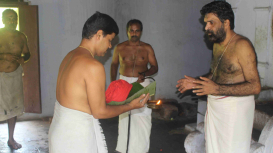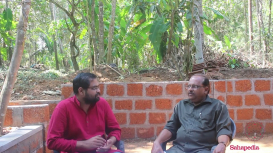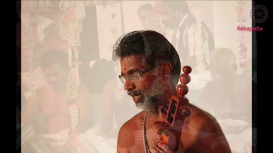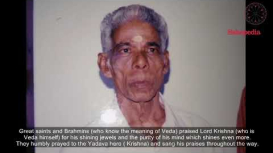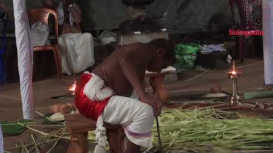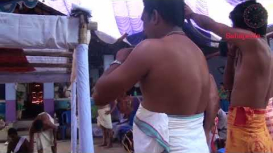Kalamezhuthu Pattu is a mode of worship and a ritualistic art form unique to Kerala. Also known as kalam pattu or simply, pattu, it involves creating the form of favourite deities on the floor, singing songs in their praise, and finally, erasing the drawings through ritualistic dance steps. Performed at annual festivals and on special occasions, kalamezhuthu pattu is a broad term which encomapasses various types of kalamezhuthu across Kerala, with regional variations and differences in content, execution, scale, duration, and purpose of the performances. The most common deities are Bhadrakali, Vettakkorumakan, Ayyappan, and serpent gods. Because of the image and the mythology associated with the deity, kalamezhuthu pattu dedicated to Lord Vettakkorumakan is unique and is considered a classic example of kalamezhuthu of Kerala.

Devakumar Thenchery
Devakumar Thenchery works as Assistant Professor in MES College of Architecture, Kakkodi, Kozhikode. His inclination towards traditional architecture made him pursue a PG Diploma in the subject and practice traditional and temple architecture along with conventional architecture. His PG thesis titled ‘Ritualistic Landscape of Kalamezhuthu Pattu of Kerala’ looked into the unexplored area of the ritualistic landscape of the art form. He recently completed his MArch in Conservation from School of Planning and Architecture, Bhopal and is presently working on the concept of ritualistic landscape.
